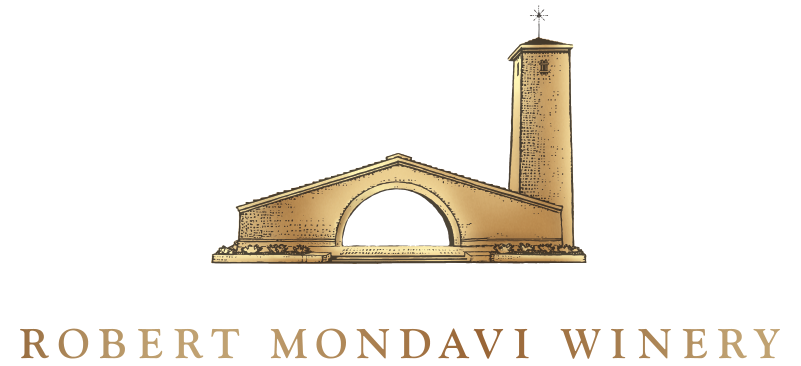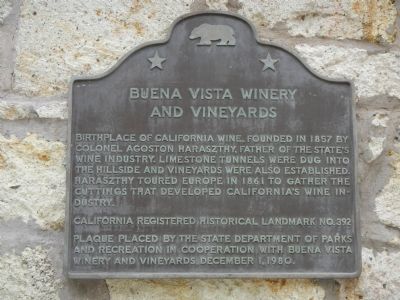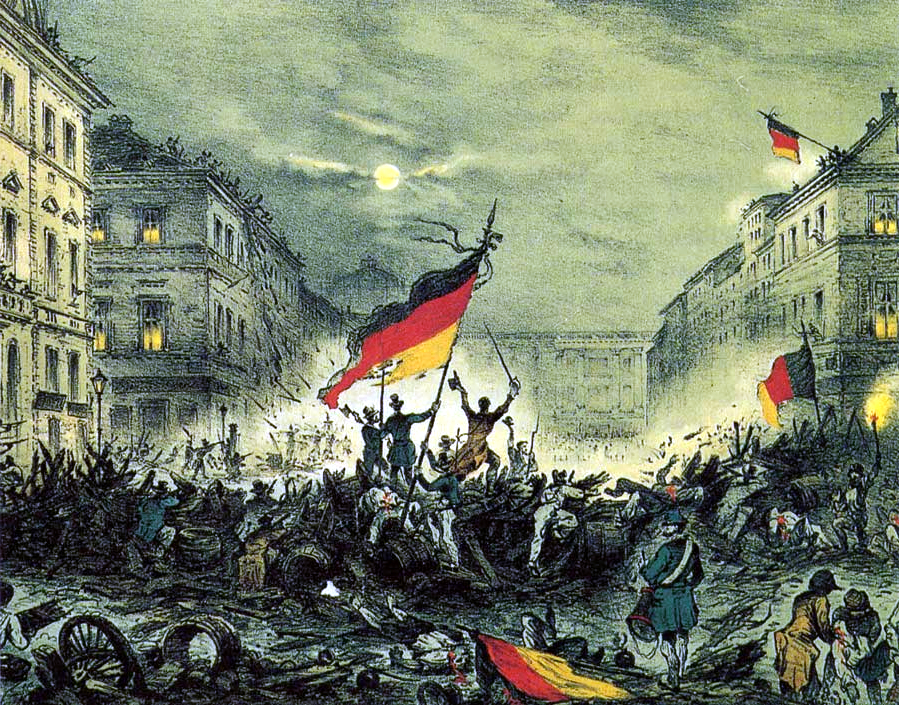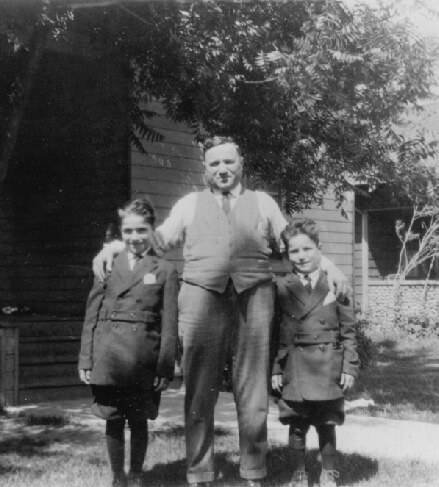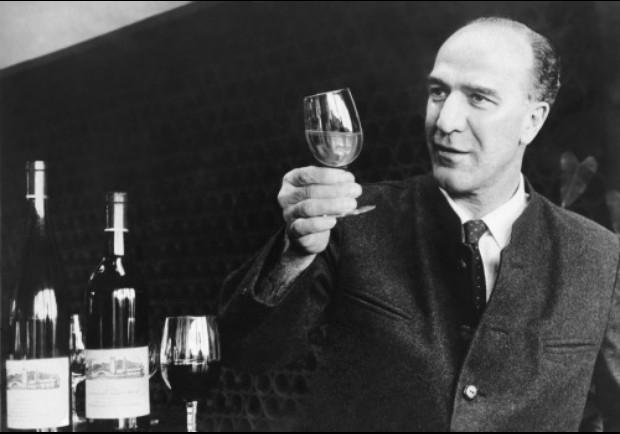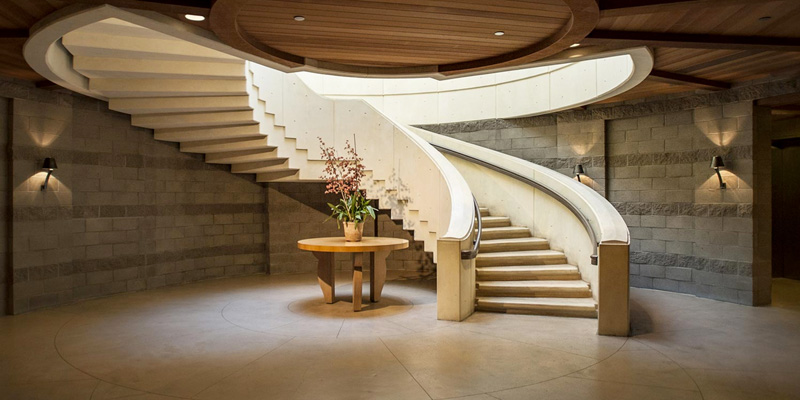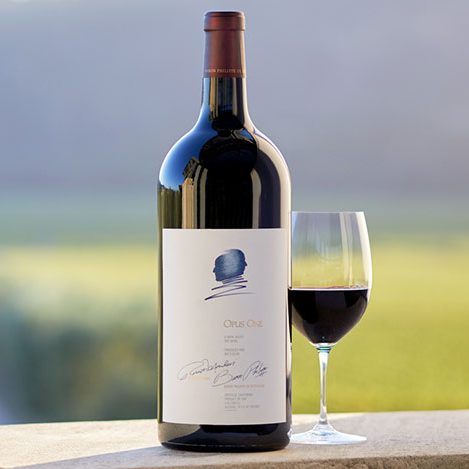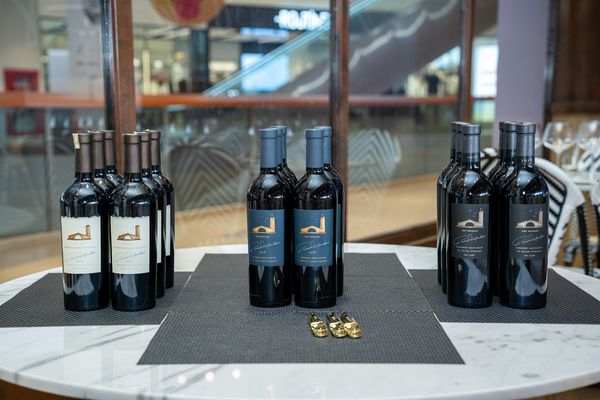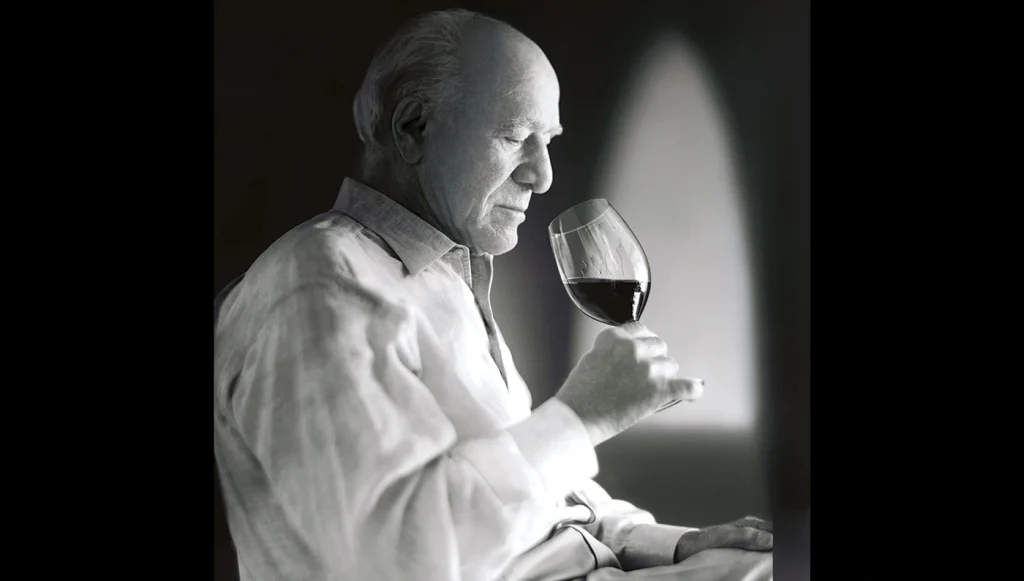The Soul of Napa, a Very Human Tale
“Wine to me is passion, It’s family and friends. It’s warmth of heart and generosity of spirit. Wine is art. It’s culture. It’s the essence of civilization and the Art of Living.”
Robert Mondavi
The Noble Hungarian
Agoston Haraszthy was a Hungarian nobleman, adventurer, traveler, writer, town-builder, and pioneer winemaker in both Wisconsin and California. He is often referred to as the “Father of Californian Wine”, alongside Junípero Serra.
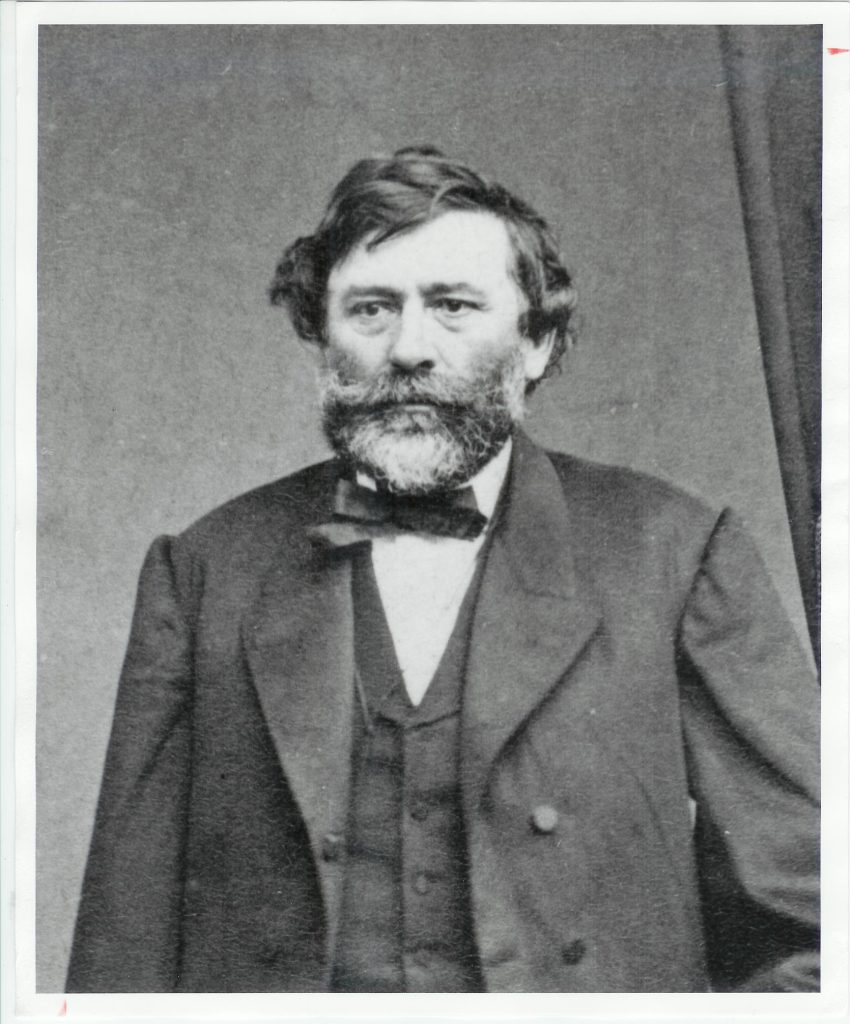 One of the first men to plant vineyards in Wisconsin, he was the founder of the Buena Vista Winery in Sonoma, California, and an early writer on California wine and viticulture. He was entitled Hungarian royalty and he was the very first Hungarian to settle permanently in the United States. In 1847, he founded the USA’s second oldest winery, (now named Wollersheim) in Wisconsin, but found the winters too harsh for the varieties he had planted.
One of the first men to plant vineyards in Wisconsin, he was the founder of the Buena Vista Winery in Sonoma, California, and an early writer on California wine and viticulture. He was entitled Hungarian royalty and he was the very first Hungarian to settle permanently in the United States. In 1847, he founded the USA’s second oldest winery, (now named Wollersheim) in Wisconsin, but found the winters too harsh for the varieties he had planted.
Haraszthy was soon drawn to California and planted a vineyard in San Diego, with vine cuttings from Europe and the East Coast of America, which he had ordered by mail. 1850, this Hungarian nobleman was elected sheriff of San Diego County and served as the city’s marshal.
He then purchased land and planted vines in San Francisco, before taking on a large tract of land near Crystal Springs on the San Francisco Peninsula, on which he also planted vines. Haraszthy was once again thwarted in his viticultural ventures when it became apparent that the climate was consistently too foggy to ripen his grapes. However, during this time he continued to import a wide variety of European grape varieties, experimenting with their suitability for local cultivation.
Haraszthy moved to Sonoma, about fifty miles north of San Francisco in 1856, and bought a small vineyard northeast of the town, renaming it Buena Vista. He took cuttings from his other, failing vineyards and replanted them here, significantly expanding the area under vine and hiring a young winemaker named Charles Krug.
Buena Vista would become a vast property and the first stone-built winery in the state, with the most modern winemaking equipment then available. In 1864, an article in Harper’s Magazine proclaimed that Buena Vista was “the largest establishment of its kind anywhere in the world!”
Agoston Haraszthy is credited with introducing hundreds of new varieties of wine-grapes to California and the United States, but by the middle of the 1860s, the vines at Buena Vista were becoming increasingly weak. This was the first infestation of phylloxera ever known in California -virtually unknown before its appearance in Sonoma- it would quickly spread throughout California and eventually over to France, where it almost destroyed an entire industry. Many pointed the finger at Haraszthy, and by 1867 he was forced out of the company he had founded by its shareholders.
Agoston did operate another small vineyard in California for a time, owned at least in name by his wife, whilst living there he filed for bankruptcy.
In 1868, Haraszthy left America, bound for Nicaragua. He had formed a partnership to develop a large sugar plantation near the seaside port of Corinto; the plan being to make rum for export back to American markets. On July 6, 1869, Agoston Haraszthy disappeared in a river on his Nicaraguan property. Some have speculated he was washed down river and out to sea, others that he was taken by alligators, known to infest the waters there; his body was never recovered.
John Patchett was born in Lincolnshire England in 1797 and immigrated to the United States in 1817. As a young man he trained as a brewmaster in Pennsylvania, but he was unable to find work. He married Esther Passmore in 1820 and they moved to Ohio, then Illinois, and then on to Iowa, as he tried his hand at farming. In 1850, it wasn’t farming but the gold rush that lured the young couple to California, at the onset of winter that year, Esther passed away.
Patchett may have done alright with his mining, he came to Napa Valley in 1852 and began buying land; his first acquisition was 16 acres. He planted his vineyard in 1854, and started making wine in 1857. He established his winery in Napa in 1858, the same year he hired young Charles Krug as his winemaker, the property would soon go on to grow to 200 acres.
John Patchett married twice more after moving to Napa; his second wife Susannah Quant died in 1862, and his third, Martha Bradshaw in 1865. Patchett himself died on August 13, 1876, recognized as the first person to plant a commercial vineyard and build a commercial wine cellar in Napa Valley, California.
Charles Krug, (1825 – 1892) was a university-trained journalist in his native Prussia, part of the Germanic states. Krug was a supporter of the ‘March Revolution’ in 1848. The Revolutions, known in some countries as the ‘Springtime of the Peoples’, were a series of political upheavals throughout Europe starting in 1848. It remains the most widespread revolutionary wave in European history to this date.
Following the February revolutions in Paris that overthrew the last French King, (Louis Philippe I). The Germanic revolutions in March stressed pan-Germanism and demonstrated popular discontent with the traditional, mostly autocratic political structure of the thirty-nine independent states. These states made up the Confederation that inherited the Germania territory of the former Holy Roman Empire, defeated by Napoleon in 1806 and dismantled after almost 850 years.
The middle-class elements were committed to liberal principles, while the working class sought radical improvements to their working and living conditions. Their demands included a single Germany, parliamentary elections, a constitution, and freedom of the press.
As the middle class and working class components of the Revolution split, the conservative aristocracy defeated it. Liberals were forced into exile to escape political persecution and imprisonment. In exile, they became known as Forty-Eighters and many emigrated to the United States.
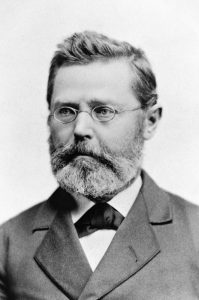 Charles Krug first came to the United States in 1847 and taught school in Philadelphia for a year. He returned to Europe settling in Frankfurt and began to play out his role as a political activist. Krug began writing revolutionary articles prior to actually participating in the insurrection to overthrow the parliament. The attempt failed, and he was jailed for nine months. A later revolution freed him from prison and he promptly fled to the United States.
Charles Krug first came to the United States in 1847 and taught school in Philadelphia for a year. He returned to Europe settling in Frankfurt and began to play out his role as a political activist. Krug began writing revolutionary articles prior to actually participating in the insurrection to overthrow the parliament. The attempt failed, and he was jailed for nine months. A later revolution freed him from prison and he promptly fled to the United States.
Krug initially came to California to take a job as the founding editor of the weekly Staats Zeitung (in English, State Newspaper) based in San Francisco, which was the first German-language paper on the west coast. He then took a job at the San Francisco Mint as a gold refiner.
Krug’s first land purchase was in neighboring Sonoma County in 1853, from Agoston Haraszthy who he already knew from when both men were working at the Mint. Krug planted several varieties on his 25 acres of land and called it Monte Bello. He sold the property in 1860 to move to the Napa Valley.
Charles Krug married well, on the day after Christmas, 1860 when he wed Carolina Bale, daughter of Napa Valley pioneer Edward Turner Bale and the granddaughter of María Isidora Vallejo of the prominent Californio Vallejo family.
The vast dowry Bale gave to the couple included 540 acres of land north of St. Helena, on which Krug planted a vineyard and founded his winery in 1861. In 1882 Krug opened the first public tasting room in California, giving birth to the ‘Cellar-door’ tasting traditions we know today.
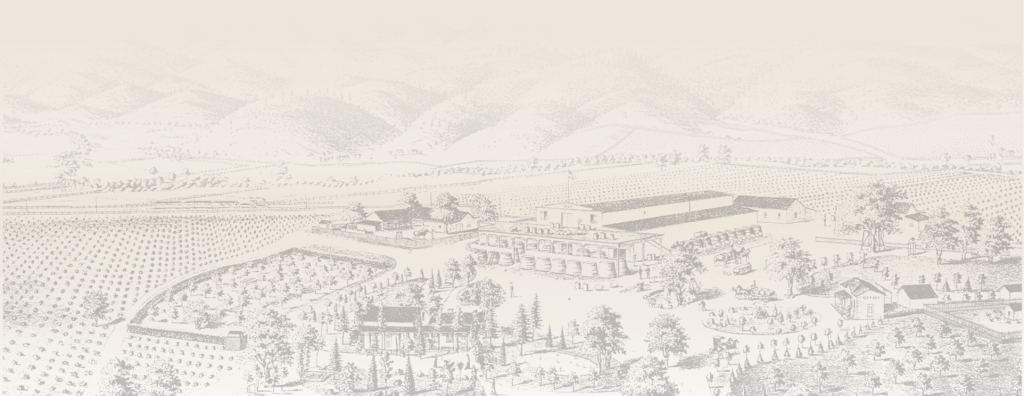 Krug was actively involved in local and state viticultural communities; he founded the Napa and Sonoma Wine Company and in 1875 was one of the founding members of the St. Helena Vinicultural Club, the organization known today as Appellation St. Helena. Krug also served as a member representing Napa, Solano, and Contra Costa counties on the Board of the California State Viticultural Commission.
Krug was actively involved in local and state viticultural communities; he founded the Napa and Sonoma Wine Company and in 1875 was one of the founding members of the St. Helena Vinicultural Club, the organization known today as Appellation St. Helena. Krug also served as a member representing Napa, Solano, and Contra Costa counties on the Board of the California State Viticultural Commission.
Charles Krug passed away in 1892, a plaque on the side of the winery in St Helena was dedicated in 2003 and is a designated historical marker by the Order of E Clampus Vitus, it reads:
“Charles Krug, a Prussian immigrant with controversial political beliefs for which he was briefly jailed, finally arrived in San Francisco in 1852. He likely came with no grape-growing or winemaking experience, but his insight, thirst, and inherent understanding that premium wines are made from European grape varieties inspired him to take the lead in advances in winemaking. Innovations such as using a cider press to efficiently crush the grapes, planting insect-resistant rootstock, and establishing the first public tasting room, truly made him a founding father of the pioneer Napa Valley wine industry.”
James Moffitt Sr. an admirer of Krug, purchased the winery in 1894, using the house as a country home and leasing out the vineyards and winery until Prohibition forced them into hibernation.
Prohibition
The destruction of the American wine industry would come not from phylloxera but from Prohibition in the United States. Thirty-three states had gone dry at the outbreak of World War I. Wartime Prohibition was enacted in 1919, followed by the Volstead National Prohibition Act and the 18th Amendment to the U.S. Constitution in 1920, forbidding the “manufacture, sale, or transportation of intoxicating liquors.”
Through a loophole allowing each home to “make 200 gallons of non-intoxicating cider and fruit juice per year,” thousands of otherwise law-abiding citizens became home winemakers and bootleggers. Prices for fresh grapes shot up, because of the increased demand and a railroad shortage of refrigerated freight cars in which to ship them. Growers began replanting fine wine variety vineyards to fruit-juice grape varieties that shipped well. This massive overplanting produced a huge surplus of low-quality grapes that persisted into the 1970s.
By the time National Repeal came into effect on December 5, 1933, the industry was in ruins. Although a few wineries had managed to survive by obtaining permits to make wines used for medicinal, sacramental, and additive purposes, production had dropped by 94% from 1919 to 1925. California had 713 bonded wineries before Prohibition; it took more than half a century, until 1986, before that many were again operating.
Prohibition left a legacy of distorting the role of alcohol in American life and ruining a fledgling world-class wine industry, which took decades of work to overcome.
“I always knew the importance of it, since I was three or four years old my mother used to feed me wine and water. I grew up with wine as liquid food.”
Robert Mondavi
The President, The Mink and a Punch in the Face
In 1943, Robert Mondavi, (1913 – 2008) learned that the dormant Charles Krug Winery in Napa Valley was for sale, and soon set about convincing his father, Cesare, to buy it. Cesare had built a successful business buying and selling grapes to home winemakers. He eventually agreed to do the deal and the consequences of this decision would transform the Napa Valley and the entire American wine industry.
Cesare and his wife, Rosa, were poor sharecroppers in Italy at the end of the 19th Century when they decided to migrate to the United States of America. They came from Sassoferrato in Italy’s Marche region, settling in Minnesota. Robert Mondavi was born in 1913, and his brother Peter was born the following year. Cesare saw opportunity during Prohibition, and in 1922 the family moved to Lodi, California to start a fruit packing business that purchased grapes from the farmers there and shipped them to the country’s growing number of ‘home’ winemakers.
Cesare Mondavi was sixty years old when he purchased the CK winery, he passed away in 1959. His sons Robert and Peter studied at Stanford and then came back to work for the family business; Robert in sales, Peter in winemaking. After Cesare’s death, Rosa was named president of the company, and she and her sons grew Charles Krug into one of the Napa Valley’s best-known wineries.
Along with their success came tensions in the business, differences of opinion, and sibling rivalry between the brothers. Robert wanted to be bold and expand, while Peter was conservative. There was also tension in the nation, pressures that were about to erupt and reverberate around the world, impacting the future of the Mondavi winemaking empire.
“If you go back to the Greeks and Romans, they talk about all three – wine, food, and art – as a way of enhancing life.”
Robert Mondavi
In 1962 Robert and Marjorie made their first trip to Europe, where they toured the wine regions, met many vignerons and winemakers, and took in all that they could. Robert was mightily impressed and upon his return to California, was eager to apply all this newfound knowledge to the family winery. Peter as the winemaker met brother Robert’s ideas and criticisms with a stiff resistance to change. For Peter, the changes Robert wanted to make were just too arbitrary and radical, he felt they were risky and unnecessary when the business was going well and had been built up on a solid footing. Tensions were simmering and would soon reach boiling point.
In 1963, Robert Mondavi and his wife were invited to the White House, to dine in with President John F. Kennedy and the first lady, Jackie Kennedy. There was a state dinner for the prime minister of Italy and the president wanted to present some American wines and their Italian-American winemakers.
Feeling a need to dress for the occasion, Robert -on a whim- purchased a mink coat for his wife Marjorie; a very expensive acquisition for the family at the time. No doubt, this was to be a highlight for Robert and his wife, with some anxiety and apprehension for the grape farmer from California from a humble migrant family and no doubt the purchase of the mink was important to him and significantly towards his feelings for his wife.
Sadly, the dinner never occurred. On Friday, November 22, 1963, at 12:30 p.m. CST in Dallas, Texas, while riding in a presidential motorcade through Dealey Plaza, John F. Kennedy, the 35th president of the United States, was assassinated.
Meanwhile, at the winery, brother Peter Mondavi was outraged at the extravagance of the mink coat, it was the final provocation for the younger brother, who had long been upset with Robert’s spending on promotions and marketing, travel, and entertainment. Having already accused him of unnecessary extravagance, Peter now accused his older brother of taking money from the winery, to pay for the fur coat.
Robert was outraged, he maintains he gave his brother three chances to ‘take it back’ but Peter refused. So, Robert punched him in the face, punched him hard, twice!
The fight split the family ‘like a cleaver’, and by 1965 Robert was forced to take paid suspension from the business. A bitter lawsuit followed, and then Robert was gone, no longer a part of the family business, and out of the winery he had convinced his late father to buy.
Now in his early fifties, Robert was out on his own, he took a bit of time to reflect and talk to friends, and he had the conviction of his beliefs, in the potential for Californian wine to be regarded as equal amongst the world’s best, and he now felt determined to see that belief through.
He borrowed $100,000 from friends and another $100,000 from banks, and chose the To Kalon vineyard in Oakville, chosen for its quality but he was also pleased with the commercial opportunities of it being only one hour’s drive from San Francisco.
Mondavi hired architect Cliff May to build his winery and placed a great deal of emphasis on a tasting area for tourists as well as the modern winemaking facility. This was the first, large-scale, modern winery to be built in the region since before Prohibition; others would soon follow as the region’s reputation began to grow.
He crushed his first vintage at Oakville in 1966, and today, over half a century later, the famous tower and arch at the winery is arguably the most recognizable symbol of United States wine in the world today.
The focus from day one was on the noble French varietals and on making wine of the highest quality. Cabernet Sauvignon, Sauvignon Blanc, Pinot Noir, Chenin Blanc, and Gamay were the main varieties at the beginning, made Gamay, Sauvignon Blanc, cabernet sauvignon, Chenin Blanc, pinot noir – using expensive techniques learned in Bordeaux.
He hired exceptional young winemaking talents, like Warren Winiarski, Mike Grgich, and Zelma Long in those early years, and he was a brilliant marketer and promotor of his winery, the Napa and Californian wines in general. Mondavi transformed the American wine industry and Americans’ perception of wine in general, some have said he ‘put California on the map as a world-class winemaking area and raised America’s level of wine sophistication immeasurably’.
Robert Mondavi brought top chefs to his winery to cook, he joined with famed cooking teacher Julia Child and others to found the American Institute of Wine and Food. He insisted on varietal labeling for his wines and aimed for the top, striving to produce wines that were the equal of the greatest wines of Europe.
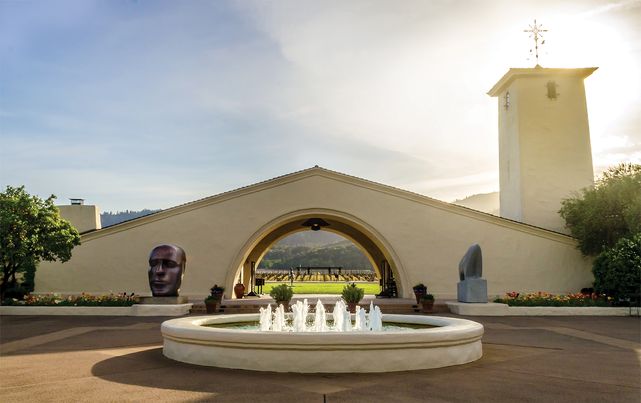 “My path was simple: Follow your passion. Pour in your heart and soul. Settle for nothing less than excellence. And with enough hard work and faith in yourself, you can realize your dream.”
“My path was simple: Follow your passion. Pour in your heart and soul. Settle for nothing less than excellence. And with enough hard work and faith in yourself, you can realize your dream.”
Robert Mondavi
In 1968, amidst a sea of Californian Chardonnay drinkers, he launched a wine with the unfashionable Sauvignon Blanc variety. Aware it was oft-maligned by the critics, he called his ‘Fume Blanc’, a nod to the magnificent, smoky, minerally crisp Sauvignon of Pouilly Fume. The wine’s success was unprecedented, eventually gaining international recognition, it was the first great Robert Mondavi success story, but this would merely turn out to be the first of a great many; the Mondavi legend was born. This was the beginning of the modern era for the Napa Valley, a move toward premium wines and away from the bulk, jug wine reputation it had held previously.
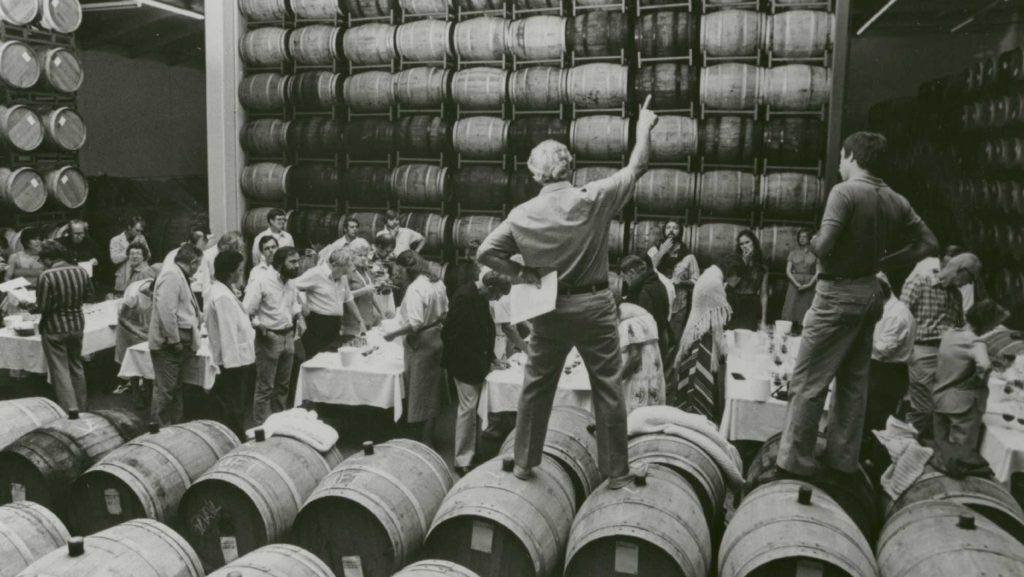 Today, Robert Mondavi is credited with bringing worldwide critical acclaim and renown to the wines of the Napa Valley. The University of California, (UC) Davis states, “Mr. Mondavi helped transform California winemaking from a cottage industry of small wineries to an internationally recognized center of fine wine production, thus changing the worldview of American wines.” The state Assembly hailed Mr. Mondavi in 2002 as “the global emissary of American food and wine” for lifetime achievements on behalf of California wine, food, and the arts, and he was inducted into the California Hall of Fame in December 2007.
Today, Robert Mondavi is credited with bringing worldwide critical acclaim and renown to the wines of the Napa Valley. The University of California, (UC) Davis states, “Mr. Mondavi helped transform California winemaking from a cottage industry of small wineries to an internationally recognized center of fine wine production, thus changing the worldview of American wines.” The state Assembly hailed Mr. Mondavi in 2002 as “the global emissary of American food and wine” for lifetime achievements on behalf of California wine, food, and the arts, and he was inducted into the California Hall of Fame in December 2007.
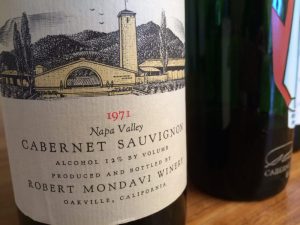 By the early 1970s, Mondavi’s Cabernet was being lauded for its quality, comparable to the finest from the other side of the world, his Chardonnay was also winning recognition. Robert was an innovator, driven by the pursuit of excellence, and he could sell premium wine like nobody else.
By the early 1970s, Mondavi’s Cabernet was being lauded for its quality, comparable to the finest from the other side of the world, his Chardonnay was also winning recognition. Robert was an innovator, driven by the pursuit of excellence, and he could sell premium wine like nobody else.
“Once I was able to take care of myself and my children, I then wanted to share.”
Robert Mondavi
Robert entered into an agreement with Baron Philippe de Rothschild, of Château Mouton Rothschild, to create Opus One Winery, in Oakville, just across Highway 29 from his own Winery’s famous arch and belfry.
Opus One, like a great many things, was conceived at the Mauna Kea Beach Hotel on the Big Island of Hawaii, in 1970, when Robert Mondavi and Baron Philippe de Rothschild met for the very first time. It was from this meeting that they began their collaboration to merge old world and new world wine styles into one grand opus.
The joint venture between Mondavi and Baron Rothschild was announced in 1980, and plans for the winery had already been developing for some time. In 1980, Mondavi sold 35 acres from his prized To Kalon Vineyard in Oakville to the joint venture that would serve as the backbone for the blend. The first vintage from this block was released in 1985 and the estate soon built the large limestone winery in Oakville that has become an icon of the region and the wine world. A predominantly Cabernet Sauvignon based, Bordeaux-style wine aged in French oak.
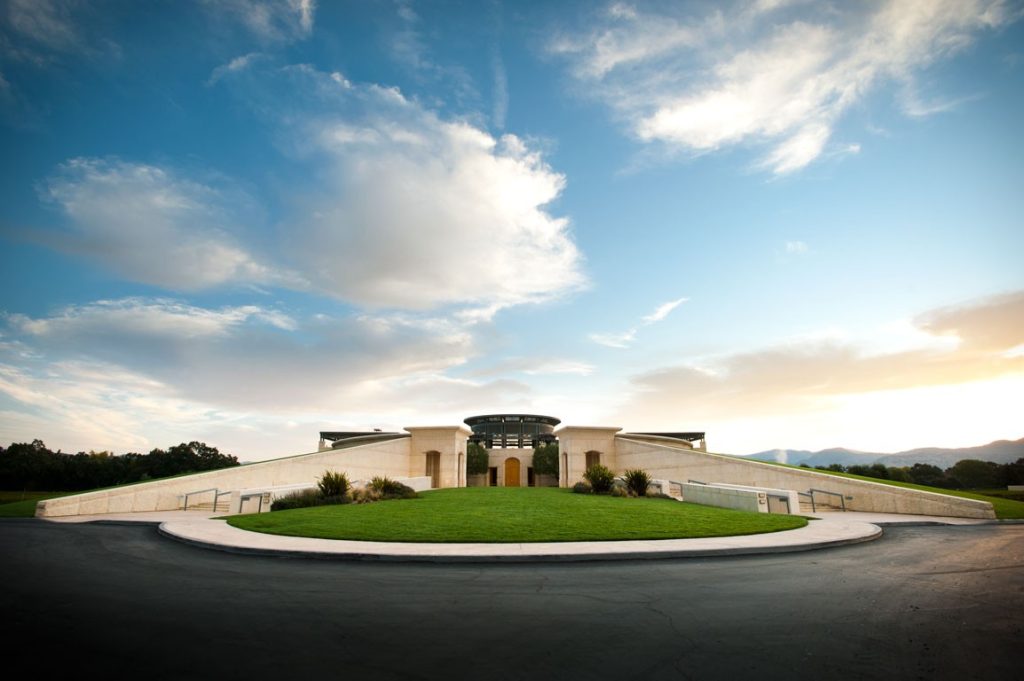 By the end of the decade, Opus One became a cult, in great demand not only in America but now also across Asia and much of Europe. Robert went on to set up joint ventures in Italy, South America, and Australia.
By the end of the decade, Opus One became a cult, in great demand not only in America but now also across Asia and much of Europe. Robert went on to set up joint ventures in Italy, South America, and Australia.
Robert and his wife, Margrit, were the chief contributors to the Mondavi Center, in Davis, California, the city’s leading performing arts venue, and were founders and major benefactors behind Napa’s COPIA: The American Center for Wine, Food and the Arts, which opened in November 2001.
“It is giving me a great satisfaction, because I had the notion that we could make great wines equal to the greatest wines in the world, and everybody said it was impossible.”
Robert Mondavi
To Kalon
Ohio-born Hamilton Walker Crabb came to California in 1853, like so many others, he came chasing gold. He eventually moved up to the Napa Valley on the advice of John Lewelling, whose 1864 planted vineyard still lives on in his name in St. Helena. Crabb purchased 240 acres in 1868, in 1872 he completed the building of his winery and began producing wine under the Hermosa vineyard name. In 1886 he changed the name to ‘To Kalon’ wine company, (τὸ καλόν) a Greek term that implies beauty with honour, goodness, and virtue, it can be roughly translated as ‘the highest beauty.
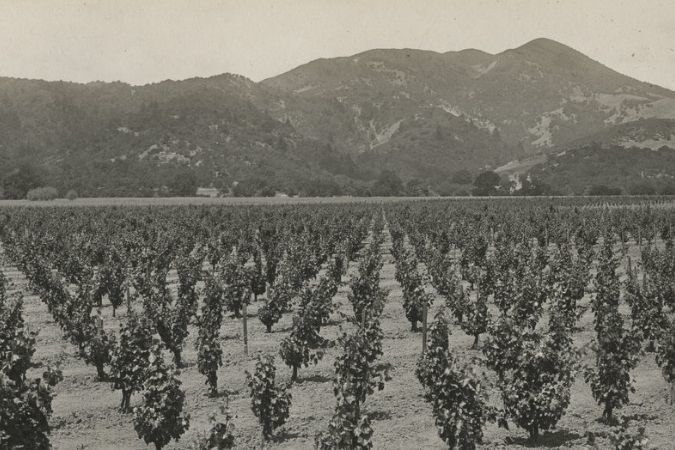 In Crabb’s own words: “The name To-Kalon… means the highest beauty or the highest good, but I try to make it mean the boss vineyard.”
In Crabb’s own words: “The name To-Kalon… means the highest beauty or the highest good, but I try to make it mean the boss vineyard.”
Like Sonoma’s Agoston Haraszthy, H. W. Crabb was an avid experimenter, importer of grapes, and nurseryman. By the end of the 1870s, Crabb had curated the largest collection of vinifera grape varieties in the United States, (estimated to be over 300 varieties). By the turn of the century, his wines were winning awards and gold medals in shows and exhibitions and he was the third largest wine producer in the state. In the end, like so many others, phylloxera ravaged H. W. Crabb’s to Kalon wine business and his finances, forcing him to sell off some of his lands. In 1899, Hamilton, (Henry) Walker Crabb passed away and the property came into the hands of E. W. Churchill, who owned it until 1943. Then it was purchased by Martin Stelling a local real estate magnate.
The following year, Stelling Jr. acquired the adjacent 1,700-acre McGill ranch with a grand vision of establishing a vast winery estate and reviving the To-Kalon name. Tragically, he died in a car accident in 1950, leaving his plans unfulfilled. His wife Caroline Stelling assumed control of the vast estate.
Caroline Stelling married General Robert G. Landry and began selling portions of the estate to various individuals and wine companies. Following her death in 1960, a section of the property was held in trust for her two children, while the remainder of the land was subdivided and sold. During this time and subsequent sales, the To-Kalon name was confusingly attached to various parcels regardless of if they were located within H.W. Crabb’s original 527-acre To-Kalon estate or just adjacent properties. Misconceptions over To Kalon land ownership continue to this very day, adding something of a sense of mysticism and awe to the legend of the To Kalon vineyard.
“Walking through To Kalon, admiring its contours and vines, smelling the richness of its soil, I knew this was a very special place. It exuded an indefinable quality I could not describe, a feeling that was almost mystical.”
Robert Mondavi
Historic Napa County maps and property deeds indicate that the 527-acre To-Kalon estate is currently owned by the Robert Mondavi Winery, Opus One Vineyard, Andy Beckstoffer, University of California, Davis, and Futo Wines, Harlan Estate lies adjacent to the To Kalon vineyard but is not a part of it.
To Kalon vineyard is protected from the cold extremes of the Pacific Ocean and the warmer air of the Central Valley, by the Mayacamas and Vaca Mountains which helps to create the cool nights and warm days perfect for the growing of premium wine grapes. The To Kalon vineyard sits on a gentle slope up towards the Mayacamas ranges, on an alluvial fan of soils and sediment deposited from mountain streams. The larger particles sit up on the slopes whilst the smaller particles carry on to the valley floor, creating free draining soils in the To Kalon, which also plays a very important role in the quality of the fruit from this world-famous vineyard.
The Constellation Era
In 1990, as Robert entered his late seventies, he handed over day-to-day control of the business to his sons, Michael and Tim. By the mid-nineties, although the company was producing half a million cases of wine a year the business experienced a cash crunch, and phylloxera has once again reared its ugly head in the Napa Valley, forcing large tracts of vineyards to be ripped out and replanted on resistant rootstock.
The Mondavi’s publicly listed their wine company in 1993, and by 1995 the wine company was producing 4.5 million cases of wine. Then the company’s fortunes took another dramatic change, the stock price began to fall, making investors nervous and the Mondavi family members elected to give up their controlling voting rights. By the time the company elected to accept a lucrative offer from the fortune 500 wine and spirits giant, Constellation Brands, (2003) Robert was in his 90s and the decision was no longer in family hands.
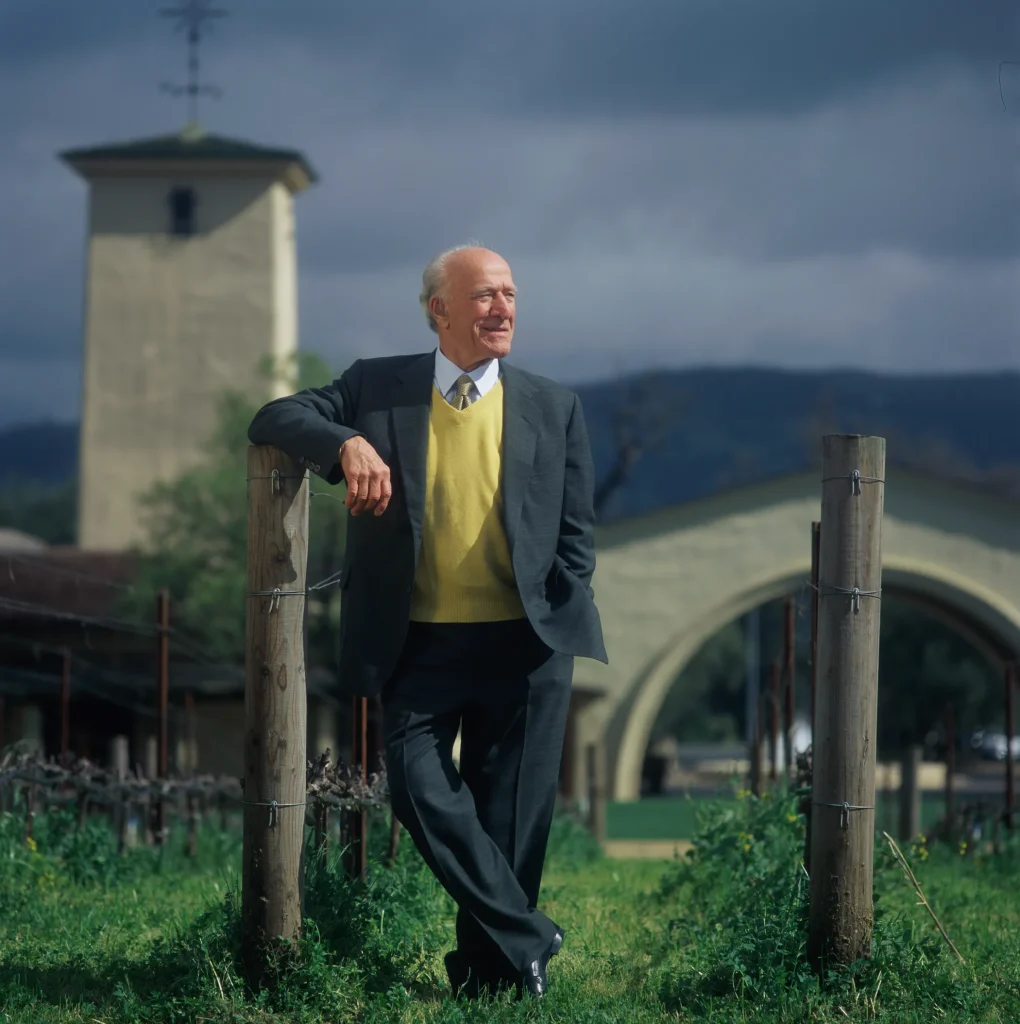 “I feel blessed. So many men and women search and search but never find their passion, their calling, their sense of mission that would ignite their hearts and fill their lives with meaning and joy.”
“I feel blessed. So many men and women search and search but never find their passion, their calling, their sense of mission that would ignite their hearts and fill their lives with meaning and joy.”
Robert Mondavi
Constellation has proven to be a respectful owner to the legacy of the Robert Mondavi brand and legacy, it recently launched a campaign it calls the ‘Soul of Napa Valley’ with a three-tiered release of three exceptional Cabernet wines. One from Napa Valley, another an ‘estate wine’ from the Napa sub-region of Oakville, and an ultra-premium ‘reserve’ Cabernet called ‘To Kalon’ off the eponymous single vineyard.
The packaging is striking, magnificent, featuring the iconic arch and belfry in gold and the signature of the great man himself prominent on the front label.
Imported into Cambodia by the good people of Chhivtimex Roffa Group, I was most fortunate to try them along with a zoom hook-up with the winery.
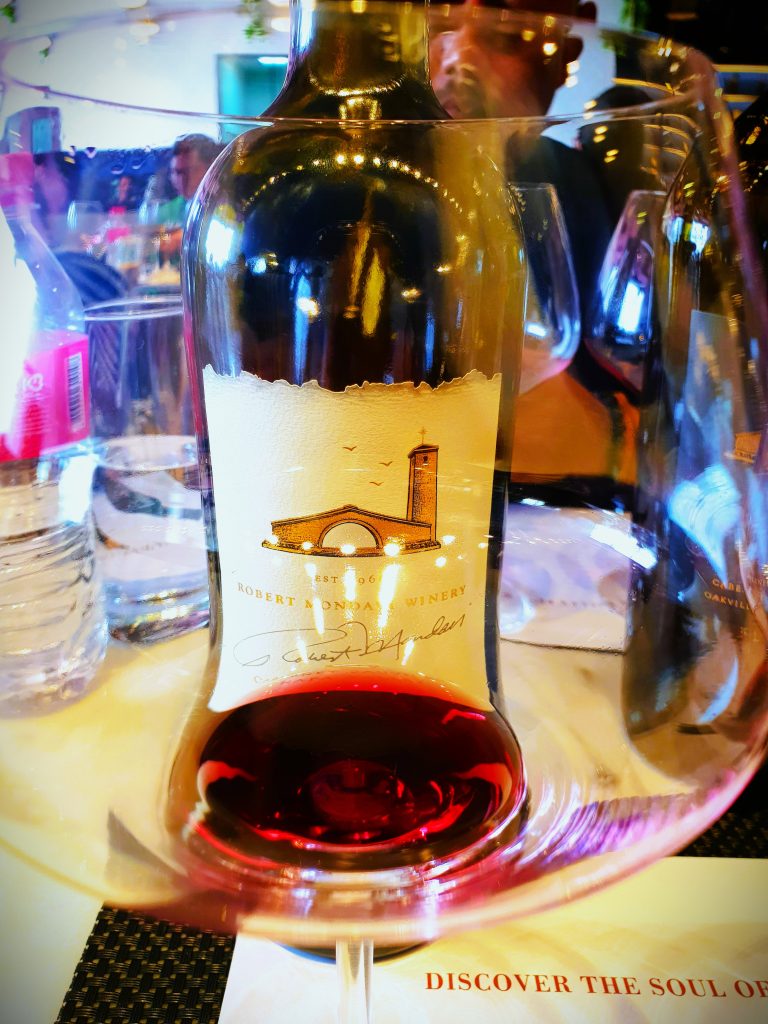 Robert Mondavi Winery, Napa Valley ‘Est. 1966’ Cabernet 2019
Robert Mondavi Winery, Napa Valley ‘Est. 1966’ Cabernet 2019
80% Cabernet Sauvignon
11% Merlot, 5% Petit Verdot, 3% Cabernet Franc, 1% Malbec
Grapes were sourced from selected sites across the Napa Valley.
Maturation was in French oak barrels for 18 months with around a quarter of that being new oak.
Aromas are restrained, subtle, and attractive, with notes of black fruits, cooking chocolate a little spice, and a slight char.
On the palate, the wine is medium-bodied, clean, and elegant with bright fruit, lively acidity, and fine tannins. The fruit is sweet and juicy on entry followed by hints of sage and mint, and slightly drying tannins. It is an elegant wine showing lots of finesse, what it lacks in concentration and power, it more than makes up for with great length, complexity, grace, and class.
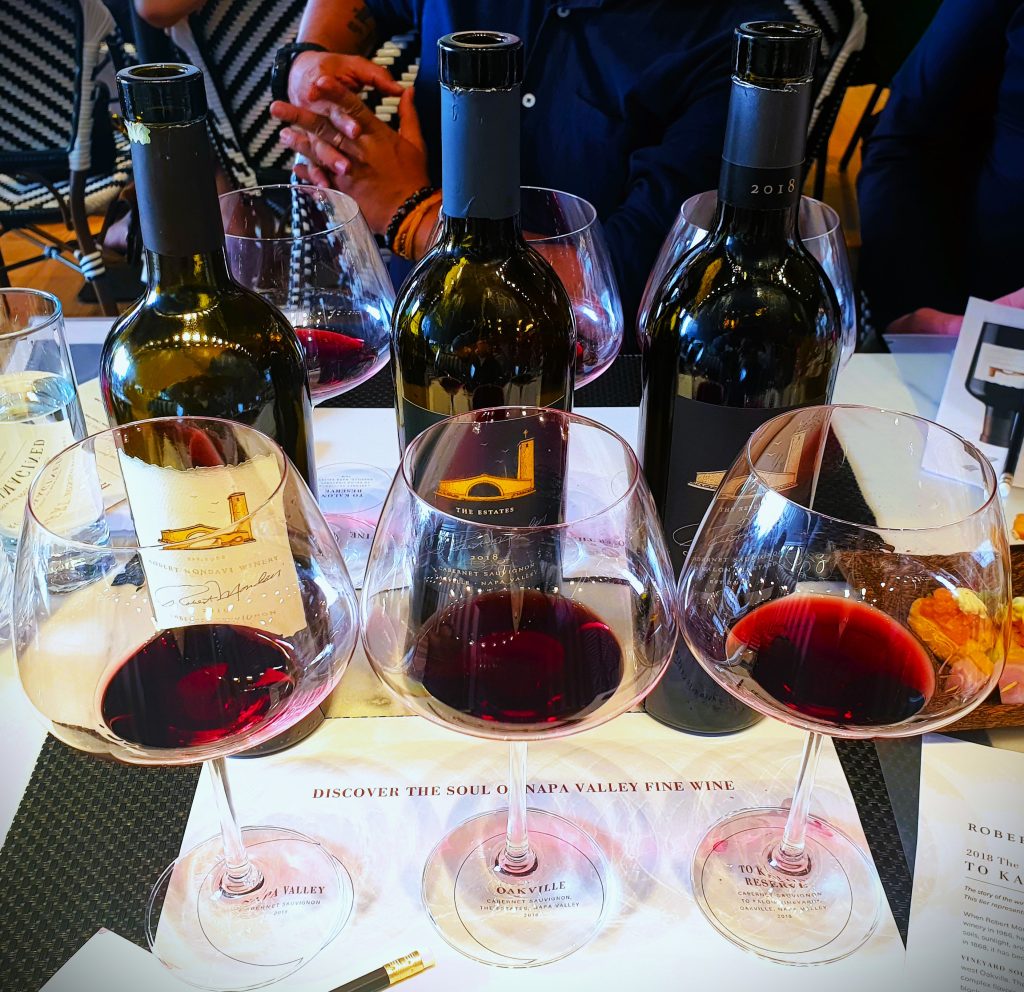 Robert Mondavi, Oakville, ‘The Estates’ Cabernet Sauvignon, 2018
Robert Mondavi, Oakville, ‘The Estates’ Cabernet Sauvignon, 2018
86% Cabernet Sauvignon, 10% Cabernet Franc, 2% Petit Verdot, 1% Malbec, 1% Merlot
All of the fruit was sourced from the Western side of the Oakville sub-region, at the foot of the Mayacamas mountain range, primarily from the To Kalon vineyard.
Maturation took place in 100% new French oak for 19 months.
The wine exhibits aromas of cherry fruit, field herbs, mint, spices, and bakers’ dough. The palate is plush with rich, concentrated berry and plum fruits, supported by oak spices and mint, the wine has great length, tannins a fine and ripe, and the acidity is vibrant. A wine of excellent concentration, balance, and structure.
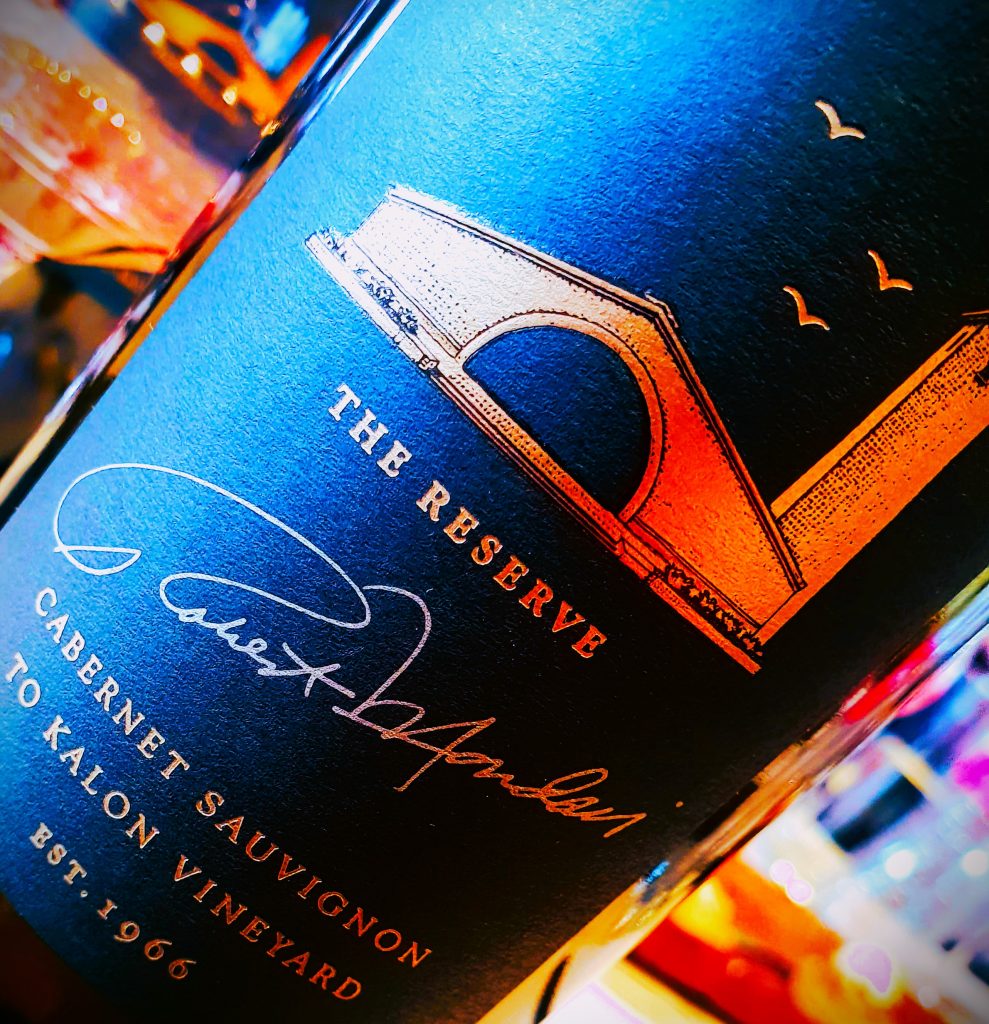 Robert Mondavi, To Kalon Vineyard, ‘The Reserve’ Cabernet Sauvignon, 2018
Robert Mondavi, To Kalon Vineyard, ‘The Reserve’ Cabernet Sauvignon, 2018
93% Cabernet Sauvignon, 5% Cabernet Franc, 2% Petit Verdot
The wine was matured in 100% new French oak barrels for 21 months
In the words of the producers, “The story of the wines of Robert Mondavi Winery begins here, with the To Kalon Reserve, it represents the pinnacle of the wines we produce.
Aromas are of blackberry, plum, clove, dark chocolate and coffee grinds with a hint of sourdough, alluring and exciting complexity on the nose.
The palate shows a wine wrapped tight in its structure, dry, fine powdery tannins, and bright acidity, like an iron fist around a core of elegant, ripe berries and soft-centered chocolates. This is majestic, outstanding, power-and-grace, a wine that deserves the respect of time in the cellar before revealing all its charms.
“I know that wine is, above all else, a blessing, a gift of nature, a joy as pure and elemental as the soil and vines and sunshine from which it springs.”
Robert Mondavi
I found these wines to be of exceptional quality, even good value, showing pristine and attractive fruit that was complex and clean; fruit handled masterfully in the winery to create medium, to medium-fuller bodied wines that show great poise, elegance, and class. Robert Mondavi felt that making good wine was a skill, but making great wine was an art, and this is what we have in the bottle here, great wines in that rarified air of high art; the To Kalon itself a masterpiece, whilst the Napa and the Oakville represent great value and introduction respectively. All are wonderful wines, and a welcome focus on the very soul of this wine business, its founder, and the essence of what he stood for.

